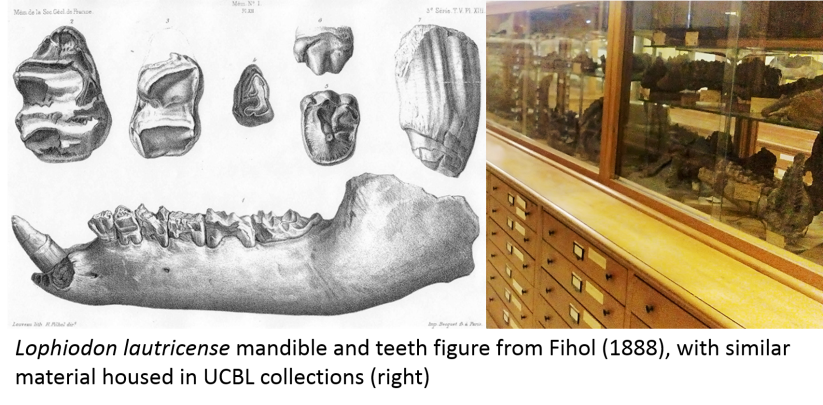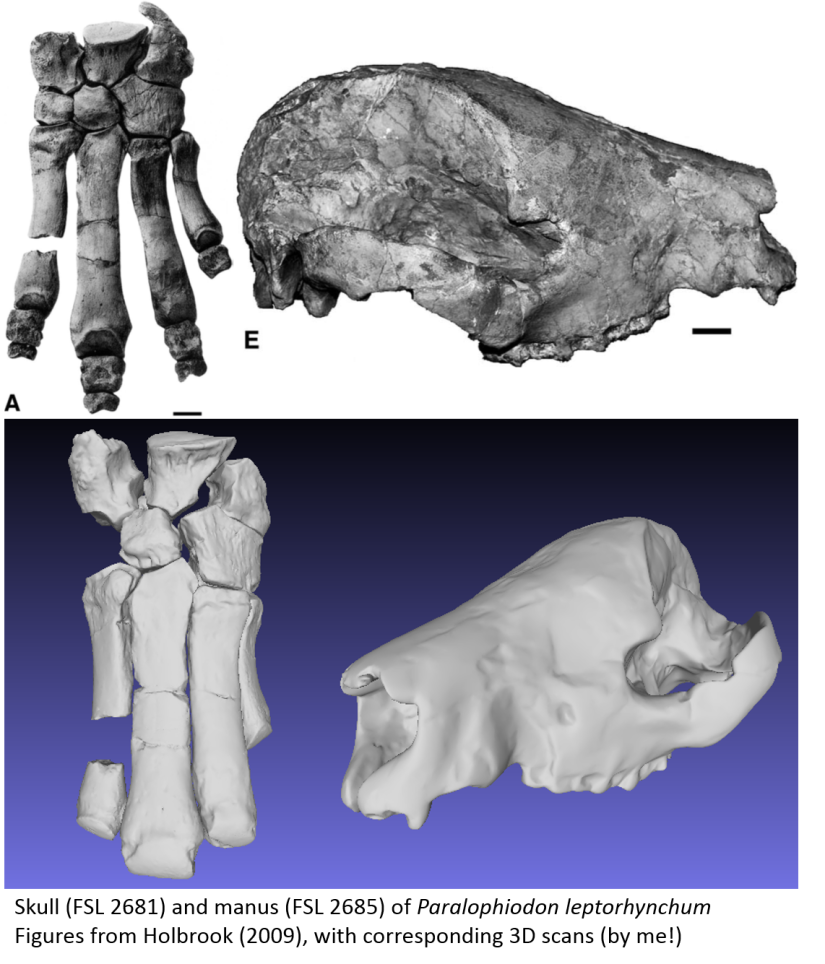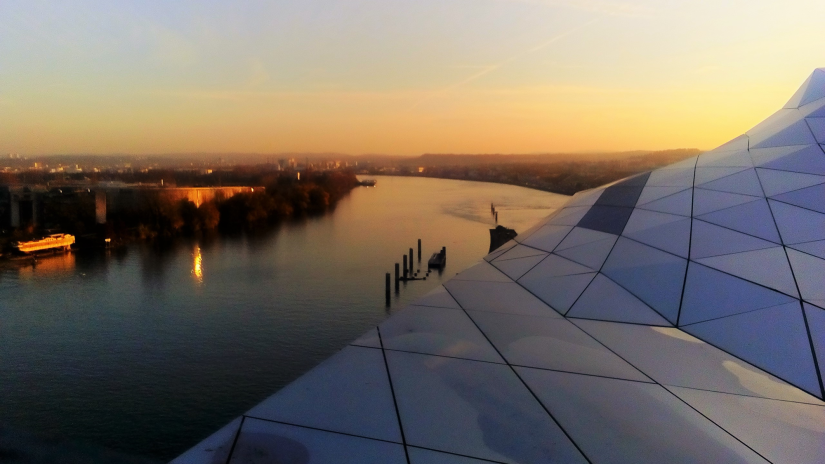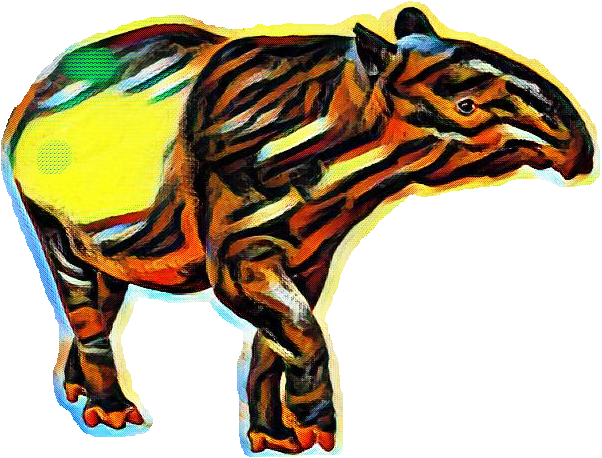Of all the weird and wonderful perissodactyls that have evolved, one of the most enigmatic and (frankly) odd groups are the lophiodontids (Tapiromorpha: Lophiodontidae). Lophiodontids (meaning “crest tooth”, referring to the prominent shearing surfaces on the teeth) are an endemic group, with up to four genera currently recognised from the Eocene of Europe: Lophiodon, Paralophiodon, Eolophiodon and Lophiaspis (Robinet et al. 2015). These animals also have an enormous size range, from around 50kg to 2000kg! That makes these closed-habitat specialists some of the largest mammals in Europe during the early Eocene, and also demonstrates an adaptability which is also observed in their contemporaries, the palaeotheres. Similarly to palaeotheres, the lophiodontids have been compared to tapirs in their ecology and morphology, triggering some wonderful reconstructions such as that by Mauricio Anton (see featured image).
Some of the most prolific fossil sites producing lophiodontid specimens have been uncovered in France. These include the riparian deposits at La Livinière (Hérault, FRA), which are rich in Paralophiodon remains, and the Robiac sites (Languedoc-Roussillon, FRA) which have produced many fossils of the giant Lophiodon lautricense. A large number of the lophiodontid fossil remains excavated through the years have been curated at the Earth Science Department at the Université Claude Bernard Lyon, currently under the watchful eye of curator Emmanuel Robert.
 The inclusion of a scanning trip to Lyon was a no-brainer for me as soon as I was able to, and in November 2016 I set aside four weeks to get to work scanning the forelimb bones of the lophiodontids at the UCBL collections. Among the best specimens I was able to get hold of were the type specimen of Paralophiodon leptorhynchum (pictured), along with a further 60 specimens from the Bartonian La Livinière deposits (c.40-37 Mya). But that was not all I was able to get scanned in the UCBL!
The inclusion of a scanning trip to Lyon was a no-brainer for me as soon as I was able to, and in November 2016 I set aside four weeks to get to work scanning the forelimb bones of the lophiodontids at the UCBL collections. Among the best specimens I was able to get hold of were the type specimen of Paralophiodon leptorhynchum (pictured), along with a further 60 specimens from the Bartonian La Livinière deposits (c.40-37 Mya). But that was not all I was able to get scanned in the UCBL!
 Soon the scans started to rack up, with over 300 bones scanned, including bones from lophiodontids, palaeotheres, pleistocene rhinoceroses (e.g. Stephanorhinus) and horses (e.g. the Stenon zebra Equus stenonis) – and remarkably I even found some invaluable tapir forelimb specimens from the “Auvergne tapir” Tapirus arvernensis. Quite unexpected, but gratefully received – the scans from the UCBL tapirs have already found their way into a publication in my article on tapir post-cranial morphology and scaling.
Soon the scans started to rack up, with over 300 bones scanned, including bones from lophiodontids, palaeotheres, pleistocene rhinoceroses (e.g. Stephanorhinus) and horses (e.g. the Stenon zebra Equus stenonis) – and remarkably I even found some invaluable tapir forelimb specimens from the “Auvergne tapir” Tapirus arvernensis. Quite unexpected, but gratefully received – the scans from the UCBL tapirs have already found their way into a publication in my article on tapir post-cranial morphology and scaling.
 All in all the experience in Lyon was a great one – not only did I get to work in a lovely department with kind and helpful people, I enjoyed the city itself, which is definitely worth a trip if you haven’t been. Any excuse to return, I will happily go along, especially if I get sunsets like the one pictured above!
All in all the experience in Lyon was a great one – not only did I get to work in a lovely department with kind and helpful people, I enjoyed the city itself, which is definitely worth a trip if you haven’t been. Any excuse to return, I will happily go along, especially if I get sunsets like the one pictured above!
Read more about the work that has been performed on the scans from the UCBL on my ResearchGate page, click here for the low-down on my tapir scaling paper, and stay tuned to learn more about my study on tapir-palaeothere-lophiodontid comparisons.

